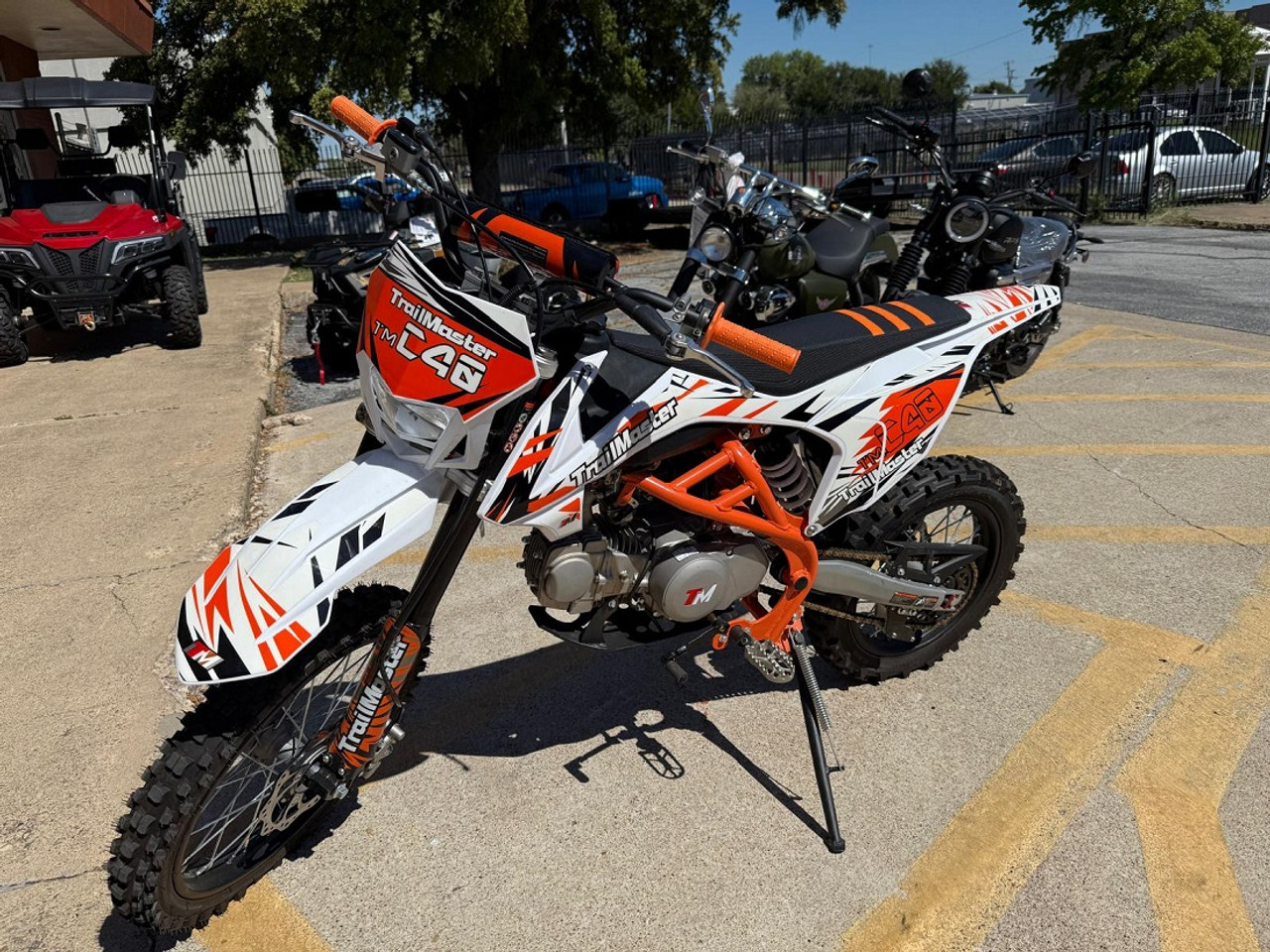Are you wondering about the differences between 2-stroke dirt bike
and 4-stroke dirt bikes, and which one might be better for you? If
you're new to dirt biking or thinking about trying a different type of
dirt bike engine, this article is for you. When choosing between a
2-stroke and 4-stroke dirt bike, first consider how you plan to ride.
If
you are a casual rider who enjoys local trails or open areas, a
2-stroke may be ideal for its lighter weight and snappier power
delivery. However, more competitive riders focused on motocross or
supercross events may prefer a 4-stroke, which is better suited for its
broader powerband and improved stability even at high speeds.
You
primarily ride trails near home to hone your skills! Are you aiming for
the best platform to advance your racing career? However, while a
4-stroke engine suit develops racing abilities, lively 2-stroke engines
better suit weekend fun and casual trail riding. Match the engine
configuration to align with your riding style, needs, and aspirations.
4-STROKE DIRT BIKE BENEFITS
A 4 stroke dirt bike
engine has greater complexity than a two-stroke engine, with more
moving parts and a longer cycle requiring four piston strokes (or two
crankshaft revolutions) for each power stroke. Despite their relatively
small displacement, four-stroke engines generate abundant power and
torque.
The
four-stroke operating cycle, with its independent intake, compression,
power, and exhaust strokes, enables smooth and predictable power
delivery. Air-cooled four-stroke trail bikes are typically easier to
control than two-stroke. With superior torque and smooth power,
four-stroke dirt bikes often suit novice riders better. In skilled
hands, a four-stroke dirt bike can execute challenging triple jumps off
short run-ups.
4 Stroke Engines:
- In comparison to 2-stroke engines, 4-stroke engines are known for their superior reliability and extended lifespan.
- When it comes to fuel efficiency, 4-stroke engines outperform 2-stroke engines by allowing riders to cover longer distances without frequent refuelling.
- An added advantage of 4-stroke engines is their reduced emission output, making them a more environmentally conscious choice.
- However, it is worth noting that 4-stroke engines tend to be more intricate and demand additional maintenance, which may be considered a drawback by certain riders.
- Additionally, 4-stroke engines are generally bulkier and less maneuverable than their 2-stroke counterparts.
2-STROKE DIRT BIKE DOMINANCE
Two-stroke
engines were popular in the 1970s and 1980s due to their high
power-to-weight ratio compared to four-stroke engines. This advantage
stems from the two-stroke cycle, in which the spark plug fires and
internal combustion occurs every two strokes of the piston rather than
every four as in a four-stroke engine. By generating power during each
revolution of the crankshaft, two-stroke engines can produce more power
relative to their weight.
Unlike
a 4-stroke engine, which needs two crankshaft revolutions to complete
the four combustion stages, a 2-stroke engine only requires one
revolution. This greater efficiency allows a 2-stroke engine of the same
displacement to generate more power than a 4-stroke, resulting in
higher straight-line speed for 2-stroke motorcycles.
2 Stroke Engines:
- 2-stroke
engines, in comparison to 4-stroke engines, possess a lighter and more
compact design. This makes them particularly suitable for utilization in
small and nimble motorcycles such as enduro bikes.
- In terms of power output per unit of displacement, 2-stroke engines surpass 4-stroke engines. They are capable of delivering greater power within a smaller and lighter framework.
- To operate, 2-stroke engines necessitate a mixture of gasoline and oil to be poured into the fuel tank. This process can be slightly more cumbersome than utilizing a separate oil system.
- Generally, 2-stroke engines are considered to be less fuel efficient than their 4-stroke counterparts. Consequently, they require more frequent refuelling during extended rides.
- Unfortunately,
2-stroke engines generate a higher level of pollution compared to
4-stroke engines. This characteristic renders them less environmentally
friendly.
So, Which Is The Right One For You?
When
choosing a bike, consider your riding experience and goals. If you race
professionally or want maximum power, a 4-stroke is best. Weekend
riders and beginners may prefer a newer 2-stroke, which offers easy
handling minus some torque, and costs less to maintain. However,
4-strokes are also great beginner bikes since they are affordable,
light, and easy to ride. Ultimately, the right bike matches your
abilities and riding style.


